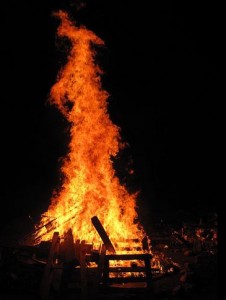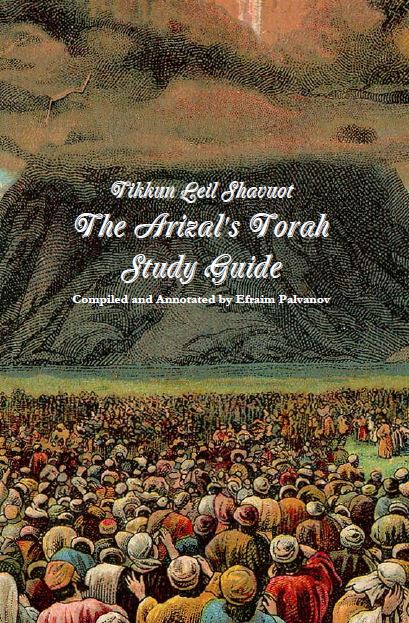 Monday evening is the start of Lag b’Omer. This special day commemorates a number of important events in the history of the Jewish people. One of these is the revelation of Jewish mystical teachings by Rabbi Shimon bar Yochai (or Rashbi), who had fled from the Romans and spent a total of 13 years hiding in a cave with his son. As is well-known, the teachings that he revealed would later be expanded upon and compiled into the Zohar, the primary textbook of Kabbalah. What isn’t as well-known is that there are several other ancient texts attributed to Rashbi. Perhaps the most enigmatic is Nistarot d’Rabbi Shimon bar Yochai, the “concealed matters” or “secrets” of Rashbi.
Monday evening is the start of Lag b’Omer. This special day commemorates a number of important events in the history of the Jewish people. One of these is the revelation of Jewish mystical teachings by Rabbi Shimon bar Yochai (or Rashbi), who had fled from the Romans and spent a total of 13 years hiding in a cave with his son. As is well-known, the teachings that he revealed would later be expanded upon and compiled into the Zohar, the primary textbook of Kabbalah. What isn’t as well-known is that there are several other ancient texts attributed to Rashbi. Perhaps the most enigmatic is Nistarot d’Rabbi Shimon bar Yochai, the “concealed matters” or “secrets” of Rashbi.
This work was first published in 1743. However, scholars trace back its first publication to sometime in the 8th century. This is because the text includes precise details of the Muslim conquest of the Holy Land in the 7th century, as well as fairly detailed accounts of the caliphs that followed Muhammad. For Rashbi to have made such a detailed prophecy of events hundreds of years in the future is hard for most scholars to accept, so they conclude that the text must have been composed shortly after the events actually took place, and falsely attributed to Rashbi. Another, more likely, possibility is that the core text does indeed go back to the time of Rashbi, but it was edited and expanded in the 8th century after the Muslim conquests.
Whatever the case, we will ignore those passages that describe historical events (which make up roughly the first half of the text), and focus on Rashbi’s descriptions of the End of Days. Much of what is written there overlaps with prophecies and accounts from the Talmud, Zohar, and Midrash. An English translation of the full text can be accessed here.
Birth Pangs and Two Messiahs
As with many other sources, Nistarot d’Rabbi Shimon bar Yochai states that Israel will experience nine months of hardship, the “birth pangs” of the messiah, based on Micah 5:2. Nistarot says this means Edom will rule over Israel for nine months (for the identity of Edom, see here and here). After this, the first messiah, Mashiach ben Yosef, will come “and he will bring them up to Jerusalem. He will rebuild the Temple and offer sacrifices; fire shall descend from heaven and consume their sacrifices…”
At this point, an evil king named Armilus will arise. Some identify Armilus with Gog from the prophecies of Ezekiel. The name “Armilus” itself probably derives from Romulus, the mythical founder of Rome (ie. Edom). Armilus will invade Israel and wreak havoc for 45 days. It is possible that something like a third of the population will perish, among them Mashiach ben Yosef. After this, God will send the second messiah, Mashiach ben David, who will slay Armilus and usher in an everlasting kingdom.
The concept of two messiahs is one we’ve discussed in the past. One of the earliest places it is mentioned is in the Talmud (Sukkah 52a). Yet, Nistarot says it isn’t an absolute necessity for there to be two messiahs: “If they are not worthy, the messiah of the lineage of Ephraim [the son of Yosef] comes; but if they are worthy, the messiah of the lineage of David will come.” In other words, the whole catastrophe with Armilus/Gog can be averted if Israel is meritorious. This was already suggested by our Sages in the Talmud (Sanhedrin 98a):
Rabbi Yehoshua ben Levi raised a contradiction: It is written: “There came with the clouds of heaven, one like unto a son of man…” (Daniel 7:13). And it is also written: “[Behold, your king will come to you…] lowly and riding upon a donkey…” (Zechariah 9:9). [The explanation is that] If they merit, the messiah will come “with the clouds of heaven”; if they do not merit, the messiah will come “lowly and riding upon a donkey”.
When it comes to prophecies, the Jewish view is that negative prophecies do not have to be realized, since they are relayed as a warning. Positive prophecies, however, will all be realized. Therefore, in the ideal case there is one messiah, Mashiach ben David, and no need for a Gog u’Magog-style conflict. If that is not the case, then first will come a Mashiach ben Yosef to lead the people through a difficult time of rectification.
Judgement and the Messianic Era
Intriguingly, Nistarot states that after Mashiach ben David establishes the kingdom there will be two thousand years of piece and prosperity. Only after this will come Judgement Day, when people will be sent to everlasting Eden above or Sheol below. The two thousand-year figure appears to be based on Psalm 90:3-4, which states: “You turn man to penitence; and say: ‘Return, you children of men.’ For a thousand years in Your sight are as yesterday when it is past…” The term “a thousand years”, elef shanim, can actually be read as “two thousand years” (since the verse could have said elef shanah in the singular, while shanim implies double or multiple). So, God gives mankind two thousand years to “return” and repent before Judgement.
This relates to a Talmudic teaching (Sanhedrin 97a) that divides up the prophesied 6000 years of human history in three: two thousand years of “chaos”, two thousand years of “Torah”, and two thousand years of Mashiach. This does not necessarily mean that the era of Mashiach will last two thousand years. After all, the Talmud wasn’t completed until about 1500 years ago, which was already well into the final two thousand-year period. What the Sages meant was that the final two thousand years of history is when the window is open for Mashiach to come. If Israel had merited it, Mashiach could have come centuries ago. With this in mind, it isn’t clear if a new two thousand-year period will begin after Mashiach ben David comes, or that we are already within this period of potential, and whenever Mashiach ben David does come, we will have however many years are left over until 6000. The latter makes more sense in light of the Talmud.
The 7 Years Before Mashiach
Nistarot d’Rabbi Shimon bar Yochai concludes with a famous teaching that also appears in the Midrash and Talmud. In Nistarot it is written more concisely, as follows:
And this will be the sign for you—when you see that at the beginning of one week there is rain, and in the second the loosing of the “arrows of hunger”, and in the third a severe famine, and in the fourth no hunger but no satisfaction, and in the fifth there is great satiety. A star shall appear from the east with a “rod” on top of it—this is the star of Israel, as Scripture says: “a star shall step forth from Jacob…” (Numbers 24:17). If it shines, it is for the benefit of Israel. Then Mashiach ben David shall emerge.
The Talmudic version (Sanhedrin 97a) gives a little more detail:
Our Rabbis taught: in the seven year cycle at the end of which the Son of David will come, in the first year, this verse will be fulfilled: “And I will cause it to rain upon one city and cause it not to rain upon another city” (Amos 9:7); in the second, the arrows of hunger will be sent forth; in the third, a great famine, in the course of which men, women, and children, pious men and saints will die, and the Torah will be forgotten by its students; in the fourth, partial plenty; in the fifth, great plenty, when men will eat, drink and rejoice, and the Torah will return to its disciples; in the sixth, [Heavenly] sounds; in the seventh, wars; and at the conclusion of the septennate the Son of David will come.
It’s hard not to think that we might be in the third year currently, when “men, women, and children, pious men and saints will die, and the Torah will be forgotten”–especially when considering how many renowned rabbis have perished recently, and how synagogues and yeshivas have been closed for weeks. While the Sages state “a great famine” here, we have seen previously that they also predict a great plague before Mashiach comes, so it could be referring to the same event. Moreover, the Sages state (Shabbat 33a) that God sends both famine and plague as retribution for the same category of sins. The two may be interchangeable.
If this is indeed the case, we might expect next year (the “fourth”) to be one of “partial plenty”, when society and economy begin to recover and return to some normalcy. The year after will be one of great prosperity, and then two more years after that Mashiach ben David will come. May we merit to see it speedily.
Lag b’Omer Sameach!
Shavuot is just three weeks away! Make your all-night learning meaningful (especially since this year we will most likely be doing it individually at home!) with Tikkun Leil Shavuot – the Arizal’s Torah Study Guide.


Pingback: Who is Mashiach? | Mayim Achronim
Pingback: Ascending the Temple Mount | Mayim Achronim
Pingback: Mashiach: Now or Never | Mayim Achronim